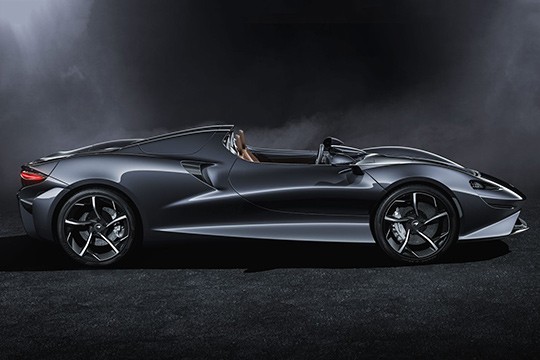Body style: Coupé (two-door)
Segment: Exotic
Production years: 2020, 2021, 2022, 2023, 2024
 9 Photos
9 PhotosThe year was 2020, and the world was in complete lockdown due to the pandemic situation. Still, McLaren considered that it was the appropriate time to launch an outrageous speedster called Elva. And it did it.
McLaren engineers started to work on the project long before the tiny virus spread its terror around the Earth, sent almost everybody home, and taught us how to work remotely. The car’s name came from French Elle Va (Eng. she goes) and was also the name of a British race car manufacturer, Elva, which built Bruce McLaren’s vehicles in the ‘60s. So, the production version had to be outrageous. Initially, McLaren tried to sell 499 of these, but since it couldn’t find enough customers, it had to scale down its ambitions to just 149. Furthermore, deliveries had to be postponed until 2021, and McLaren even had to install a windshield on the vehicle to broaden its customer database. In some countries and states in the U.S., legislation didn’t allow vehicles without a fixed window in front of the driver.
The car’s shape was fluid and boasted a shark-nose styling adorned by the C-shaped side intakes that housed the LED headlights. In the lower bumper area, McLaren installed a mouth-like air intake with two vertical struts that supported the lower splitter, while on the front’s clamshell was an exhaust vent with internal channels that diverted the airflow at a 130-degree angle via the Active Air Management System (AAMS) above the cockpit, which featured carbon fiber. From its profile, the muscular look of the front and rear fenders revealed a connection with the 1960s cars. McLaren’s designers took inspiration from the same cars when they made the double humps behind the cockpit, which concealed the safety arches. The deeply sculptured dihedral doors opened upwards to ease ingress and egress. At the back, the Elva sported LED horizontal taillights and two round exhausts that poked through the center of the rear fascia. Underneath it, the complicated diffuser was functional and amplified the ground effect that sucked the car onto the ground to increase grip during high-speed cornering.
The cabin boasted a high level of luxury but with a distinct approach for the driver and the side passenger. As a result, the one behind the wheel could focus just on driving, with the digital dashboard fronting them and a floating-mounted touchscreen above the center console, tilted toward the driver. The side passenger could enjoy the unrestricted view to the front since there was no A-pillar or windshield. Both occupants sat in high-bolstered sports seats wrapped in Aniline leather that could hold them in place during high-speed cornering maneuvers.
McLaren built the Elva based on the same platform as the 720S and played in the same league as the Ferrari Monza and the Aston Martin V12 Speedster. Still, unlike those, it was powered by a 4.0-liter twin-turbocharged V8 that sent 815 PS (804 hp) to the rear wheels via a seven-speed automatic (dual-clutch) gearbox. It was the most powerful version of the M840TR engine made by McLaren, and the car boasted a 0-200 kph (0-124 MPH) time of just 6.7 seconds.
MCLAREN Elva 2020, 2021, 2022, 2023, 2024
- 4.0L V8 7AT (815 HP)
MCLAREN Elva
4.0L V8 7AT (815 HP)
ENGINE SPECS - 4.0L V8 7AT (815 HP) | |
|---|---|
| Cylinders: | V8 |
| Power: | 599.4 KW @ - RPM 815 HP @ - RPM 804 BHP @ - RPM |
| Fuel System: | Turbocharged Direct Injection |
| Fuel: | Gasoline |
PERFORMANCE SPECS | |
|---|---|
| Top Speed: | 124 mph (200 km/h) |
| Acceleration 0-62 Mph (0-100 kph): | 6.7 s |
TRANSMISSION SPECS | |
|---|---|
| Gearbox: | 7-speed automatic |
BRAKES SPECS | |
|---|---|
| Front: | Ventilated Discs |
| Rear: | Ventilated Discs |








